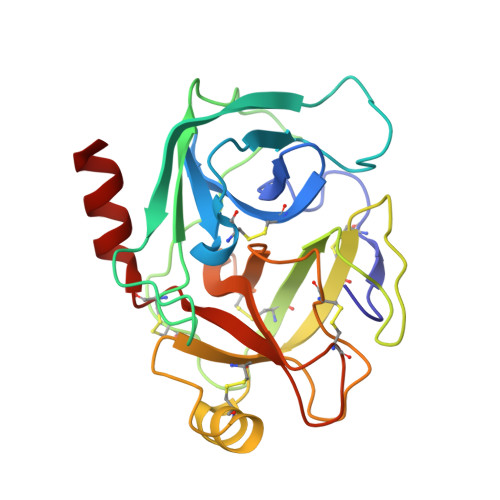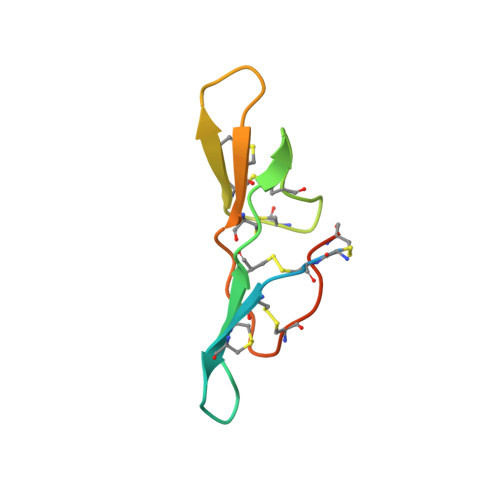The 0.25-nm X-ray structure of the Bowman-Birk-type inhibitor from mung bean in ternary complex with porcine trypsin.
Lin, G., Bode, W., Huber, R., Chi, C., Engh, R.A.(1993) Eur J Biochem 212: 549-555
- PubMed: 8444191
- DOI: https://doi.org/10.1111/j.1432-1033.1993.tb17692.x
- Primary Citation of Related Structures:
3MYW - PubMed Abstract:
The structure of the Bowman-Birk-type inhibitor from mung bean Phaseolus aureus has been determined in ternary complex with porcine trypsin. The complex formed crystals of the trigonal space group P3(1)21 which diffracted to a resolution of 250 pm. Each of the two mung bean protease reactive sites is bound to trypsin according to the standard mechanism for serine proteinase inhibition. The binding loops thereby adopt the canonical conformation for the standard mechanism; however, the sub-van der Waals contact between the active-site serine O gamma (195) and the P1 carbonyl carbon of both loops is significantly smaller (210 pm) than hitherto observed, with continuous electron density connecting the two atoms. The inhibitor is formed by two double-stranded antiparallel beta-sheets, which are connected into a moderately twisted beta-sheet by a network of hydrogen bonds involving main-chain atoms and two water molecules. All contacts with neighbors in the crystal lattice occur between trypsin molecules. This apparently gives rise to an unusual form of disorder where the complexes pack in two orientations Ta:MaMb:Tb and Tb:MbMa:Ta (Ta, Tb = trypsin, Ma = mung bean loop I, Mb = mung bean loop II), such that the asymmetric unit consists of the ternary complex in two orientations, each with half occupancy. This is nearly equivalent to an asymmetric unit which has one trypsin molecule with full occupancy and one mung bean inhibitor with half occupancy and a crystallographic twofold symmetry axis through its center. Because of the approximate twofold symmetry of the inhibitor itself, however, the electron density was interpretable for most of the inhibitor (17 residues at the termini were not resolved) and shows evidence of its double orientation.
Organizational Affiliation:
Shanghai Institute of Biochemistry, People's Republic of China.
















